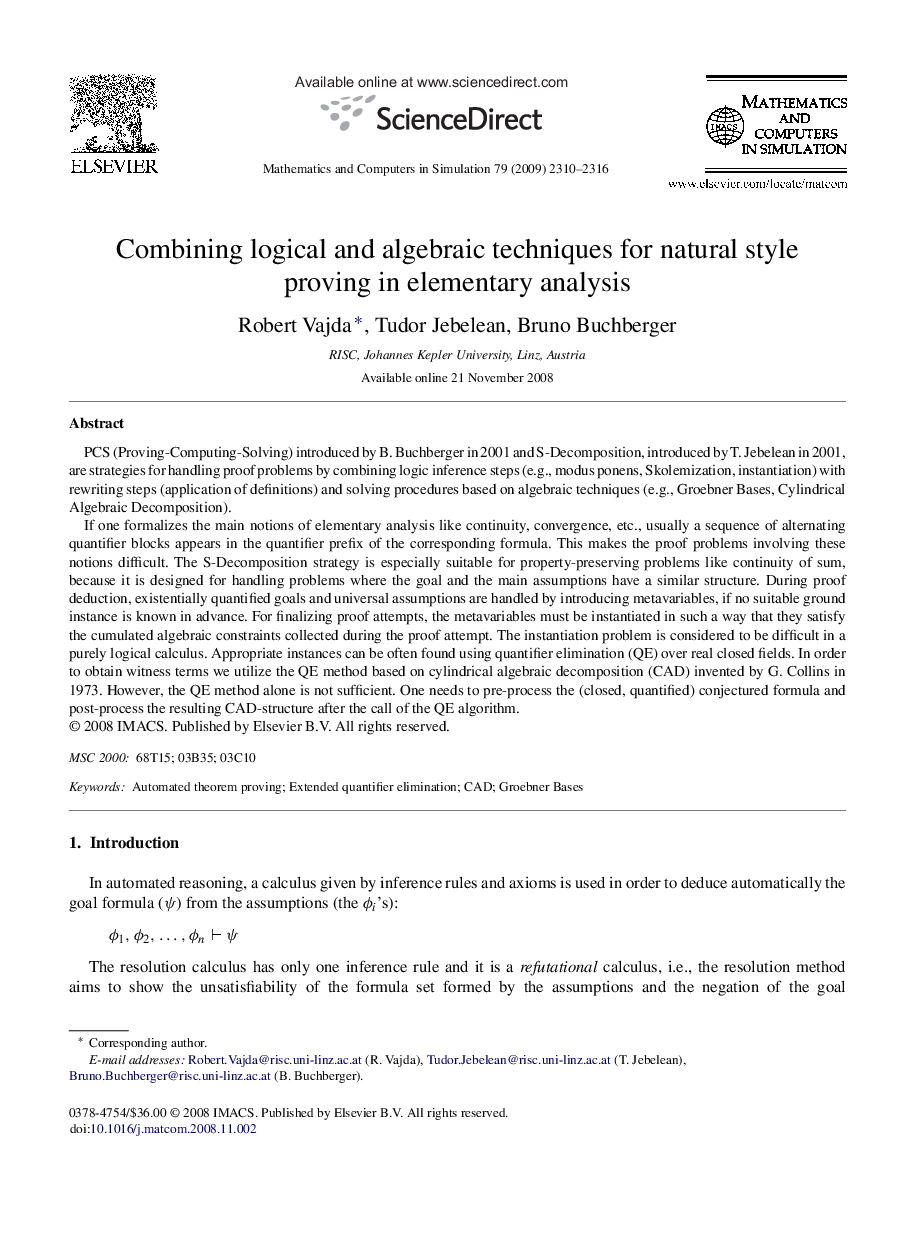| Article ID | Journal | Published Year | Pages | File Type |
|---|---|---|---|---|
| 1140110 | Mathematics and Computers in Simulation | 2009 | 7 Pages |
Abstract
If one formalizes the main notions of elementary analysis like continuity, convergence, etc., usually a sequence of alternating quantifier blocks appears in the quantifier prefix of the corresponding formula. This makes the proof problems involving these notions difficult. The S-Decomposition strategy is especially suitable for property-preserving problems like continuity of sum, because it is designed for handling problems where the goal and the main assumptions have a similar structure. During proof deduction, existentially quantified goals and universal assumptions are handled by introducing metavariables, if no suitable ground instance is known in advance. For finalizing proof attempts, the metavariables must be instantiated in such a way that they satisfy the cumulated algebraic constraints collected during the proof attempt. The instantiation problem is considered to be difficult in a purely logical calculus. Appropriate instances can be often found using quantifier elimination (QE) over real closed fields. In order to obtain witness terms we utilize the QE method based on cylindrical algebraic decomposition (CAD) invented by G. Collins in 1973. However, the QE method alone is not sufficient. One needs to pre-process the (closed, quantified) conjectured formula and post-process the resulting CAD-structure after the call of the QE algorithm.
Related Topics
Physical Sciences and Engineering
Engineering
Control and Systems Engineering
Authors
Robert Vajda, Tudor Jebelean, Bruno Buchberger,
